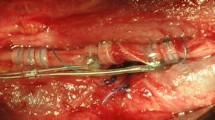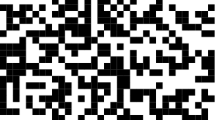Abstract
The vagus nerves convey both afferent and efferent information about autonomic activity related to cardiovascular functions. Those functions have been shown to change due to epileptic seizures, which suggests that ictal events might be detected via the vagus electroneurogram (VENG). In this study, we characterize the association of ictal and peri-ictal VENG with cardiac parameters. The electrocorticogram (ECoG), electrocardiogram, and the VENG were recorded in anesthetized rats, which were intravenously infused with either a pentylenetetrazole (PTZ) solution (PTZ-lot, n = 11) or saline (control-lot, n = 6). Control animals were subsequently vagotomized and also infused with a PTZ solution (n = 5, V-PTZ-lot). Cardiac and VENG parameters were assessed during different ECoG stages of ictal activity. None of the parameters changed in the control-lot. PTZ infusion induced seizures in all rats. Cardiac-related VENG showed distinctive firing patterns for the left and right vagus nerves. Significant ictal and post-ictal changes were seen in both the left and the right VENG in association with cardiac changes and increased parasympathetic influence on the heart. Changes in VENG parameters might provide a new way to assess the ictal state of patients, which could be suitable for triggering on-demand vagus nerve stimulation.





Similar content being viewed by others
References
Ardell JL, Randall WC (1986) Selective vagal innervation of sinoatrial and atrioventricular nodes in canine heart. Am J Physiol 251(4):764–773
Asala SA, Bower AJ (1986) An electron microscope study of vagus nerve composition in the ferret. Anat Embryol 175(2):247–253
Boon P, Vonck K, Van Walleghem P, D’Have M, Goossens L, Vandekerckhove T et al (2001) Programmed and magnet-induced vagus nerve stimulation for refractory epilepsy. J Clin Neurophysiol 18(5):402–407
Cerati D, Schwartz PJ (1991) Single cardiac vagal fiber activity, acute myocardial ischemia, and risk for sudden death. Circ Res 69(5):1389–1401
Coleridge HM, Coleridge JC, Kaufman MP, Dangel A (1981) Operational sensitivity and acute resetting of aortic baroreceptors in dogs. Circ Res 48(5):676–684
De Herdt V, Boon P, Ceulemans B, Hauman H, Lagae L, Legros B et al (2007) Vagus nerve stimulation for refractory epilepsy: a Belgian multicenter study. Eur J Paediatr Neurol 11(5):261–269
Einthoven W, Flohil A, Battaerd PJTA (1908) On vagus currents examined with the string galvanometer. Exp Physiol 1(3):243–245
Evans DHL, Murray JG (1954) Histological and functional studies on the fibre composition of the vagus nerve of the rabbit. J Anat 88(3):320–337
Hamilton RM (2004) Can cardiac vagal tone be estimated from the 10-second ECG? Int J Cardiol 95(1):109–115
Hamlin RL, Smith CR (1968) Effects of vagal stimulation on S-A and A-V nodes. Am J Physiol 215(3):560–568
Harreby KR, Sevcencu C, Struijk JJ (2011) Early seizure detection in rats based on vagus nerve activity. Med Biol Eng Comput 49(2):143–151
Adkins RA, O’Donovan CA, Terry RS Jr (1999) Assignee: Cyberonic. Automatic activation of a neurostimulator device using a detection algorithm based on cardiac activity. US Patent 5,928,272
Giftakis JE, Torgerson NA (2010) Assignee: Medtronic. Seizure detection algorithm adjustment. US2010/0121215 A1
Kerem DH, Geva AB (2005) Forecasting epilepsy from the heart rate signal. Med Biol Eng Comput 43(2):230–239
Lathers CM, Schraeder PL (1982) Autonomic dysfunction in epilepsy: characterization of autonomic cardiac neural discharge associated with pentylenetetrazol-induced epileptogenic activity. Epilepsia 23(6):633–647
Massari VJ, Johnson TA, Gatti PJ (1995) Cardiotopic organization of the nucleus ambiguus? An anatomical and physiological analysis of neurons regulating atrioventricular conduction. Brain Res 679(2):227–240
McAllen RM, Spyer KM (1978) The baroreceptor input to cardiac vagal motoneurones. J Physiol 282:365–374
McLachlan RS (1993) Suppression of interictal spikes and seizures by stimulation of the vagus nerve. Epilepsia 34(5):918–923
Mormann F, Andrzejak RG, Elger CE, Lehnertz K (2007) Seizure prediction: the long and winding road. Brain 130(2):314–333
Morris GL III (2003) A retrospective analysis of the effects of magnet-activated stimulation in conjunction with vagus nerve stimulation therapy. Epilepsy Behav 4(6):740–745
Morris GL III, Mueller WM (1999) Long-term treatment with vagus nerve stimulation in patients with refractory epilepsy. The Vagus Nerve Stimulation Study Group E01–E05. Neurology 53(8):1731–1735
Novak V, Reeves AL, Novak P, Low PA, Sharbrough FW (1999) Time-frequency mapping of R-R interval during complex partial seizures of temporal lobe origin. J Auton Nerv Syst 77(2–3):195–202
Paintal AS (1953) A study of right and left atrial receptors. J Physiol 120(4):596–610
Paintal AS (1973) Vagal sensory receptors and their reflex effects. Physiol Rev 53(1):159–227
Ramzan IM, Levy G (1985) Kinetics of drug action in disease states. XIV. Effect of infusion rate on pentylenetetrazol concentrations in serum, brain and cerebrospinal fluid of rats at onset of convulsions. J Pharmacol Exp Ther 234(3):624–628
Schuele SU, Lüders HO (2008) Intractable epilepsy: management and therapeutic alternatives. Lancet Neurol 7(6):514–524
Sevcencu C, Struijk JJ (2010) Autonomic alterations and cardiac changes in epilepsy. Epilepsia 51(5):725–737
Spyer KM, Brooks PA, Izzo PN (1994) Vagal preganglionic neurons supplying the heart. In: Schwartz PJ, Levy MN (eds) Vagal control of the heart: experimental basis and clinical implications. Futura Publishing Company ed., Armonk, pp 45–64
Task Force of The European Society of Cardiology and The North American Society of Pacing and Electrophysiology (1996) Heart rate variability: standards of measurement, physiological interpretation, and clinical use. Eur Heart J 17(3):354–381
Terndrup TE, Darnall R, Knuth SL, Bartlett D Jr (1999) Effects of experimental cortical seizures on respiratory motor nerve activities in piglets. J Appl Physiol 86(6):2052–2058
Uthman BM, Wilder BJ, Penry JK, Dean C, Ramsay RE, Reid SA et al (1993) Treatment of epilepsy by stimulation of the vagus nerve. Neurology 43(7):1338–1345
Woodbury DM, Woodbury JW (1990) Effects of vagal stimulation on experimentally induced seizures in rats. Epilepsia 31:7–19
World Health Organization (2005) Atlas—epilepsy care in the world 2005. World Health Organization, Geneva
Acknowledgments
This study was supported by the Danish National Advanced Technology Foundation. We thank the staff at Aalborg Biomedical Laboratory for their generous help during the experiments. The authors have filed a patent application on seizure prediction using VN activity.
Author information
Authors and Affiliations
Corresponding author
Rights and permissions
About this article
Cite this article
Harreby, K.R., Sevcencu, C. & Struijk, J.J. Ictal and peri-ictal changes in cervical vagus nerve activity associated with cardiac effects. Med Biol Eng Comput 49, 1025–1033 (2011). https://doi.org/10.1007/s11517-011-0782-7
Received:
Accepted:
Published:
Issue Date:
DOI: https://doi.org/10.1007/s11517-011-0782-7




